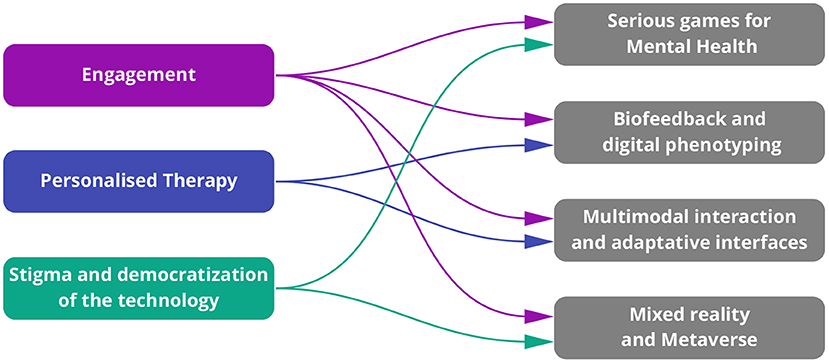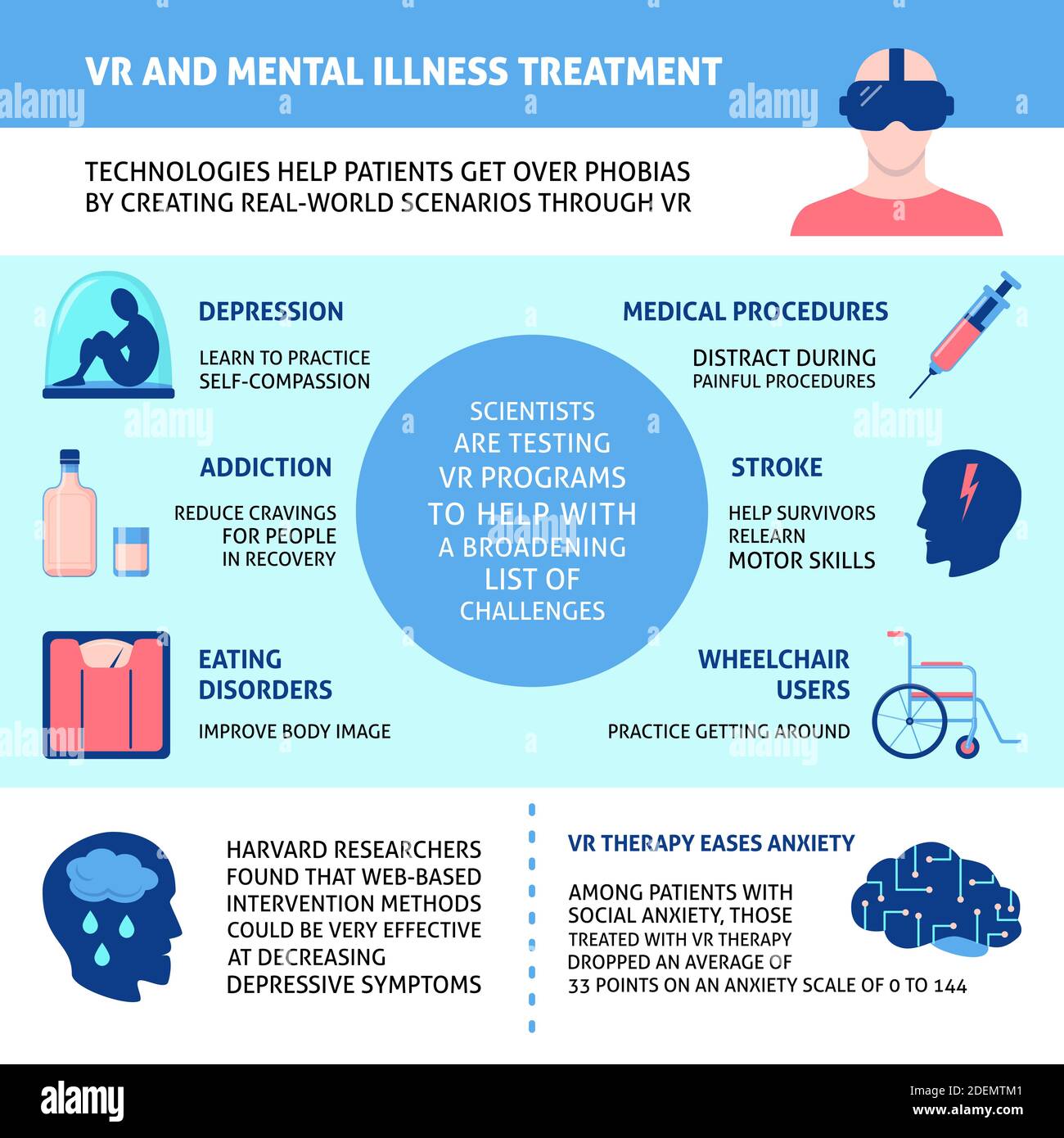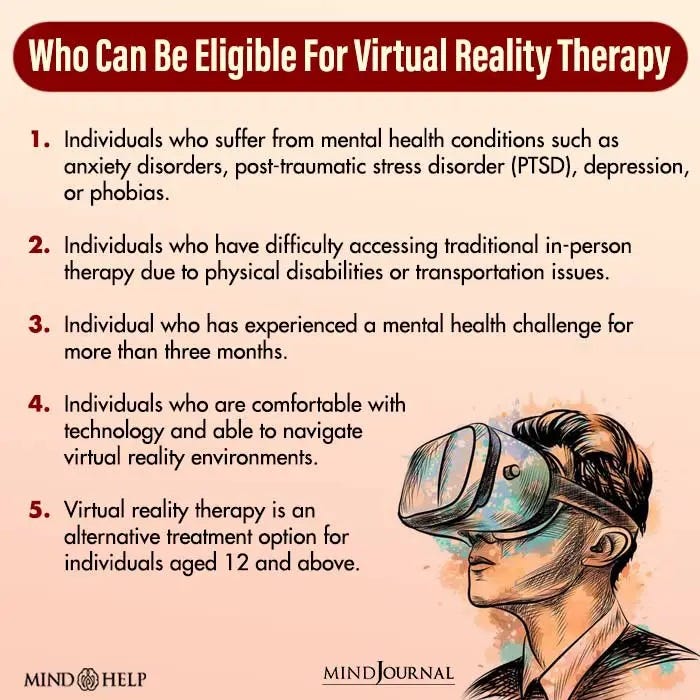Virtual Reality (VR) has emerged as a powerful tool in the field of mental health, offering unique opportunities and challenges. With its ability to create immersive and interactive experiences, VR has the potential to revolutionize the way we understand and treat mental health conditions. It allows individuals to step into a different reality, providing a safe and controlled environment for therapeutic interventions.
The use of VR in mental health has gained traction in recent years, with studies showing promising results. For example, research has demonstrated that VR-based exposure therapy can effectively treat anxiety disorders by allowing individuals to confront their fears in a virtual setting. Additionally, VR has been used to improve symptoms of depression and PTSD, offering a new approach to traditional treatments. However, as with any emerging technology, there are challenges to overcome, including accessibility, cost, and ethical considerations. Nevertheless, the potential of VR in the field of mental health is undoubtedly vast, and its integration into clinical practice holds immense promise for the future.


The Potential of Virtual Reality in Mental Health
Virtual reality (VR) technology has gained significant attention in recent years as a tool for various applications, including entertainment, education, and training. One area where VR shows tremendous potential is in the field of mental health. The immersive and interactive nature of VR can create a virtual environment that simulates real-world situations and experiences, offering new opportunities for assessment, diagnosis, and treatment of mental health conditions.
In the context of mental health, VR can be used to create simulated scenarios that expose individuals to anxiety-inducing situations in a controlled environment. For example, VR exposure therapy has been proven effective in treating phobias, post-traumatic stress disorder (PTSD), and social anxiety disorder. By gradually exposing individuals to their fears through virtual experiences, therapists can guide them through the process of desensitization and help them overcome their anxiety.
The use of VR in mental health is not limited to exposure therapy. It can also be utilized in cognitive behavioral therapy (CBT) to help individuals challenge and reframe negative thoughts and beliefs. VR can create scenarios that trigger negative cognitions and allow therapists to guide patients in recognizing and addressing those thoughts in a safe and controlled environment. It provides an immersive platform for individuals to practice coping strategies and develop new patterns of thinking.
Moreover, VR can be used as a tool for relaxation and stress reduction. Virtual environments can be designed to promote relaxation, mindfulness, and stress management techniques. Individuals can explore serene landscapes, engage in guided meditation exercises, or participate in virtual mindfulness training. The immersive nature of VR facilitates deep focus and engagement, making it a powerful tool for promoting mental well-being and reducing stress.
The potential of VR in mental health extends beyond therapy. It can also be used for education and training purposes, allowing mental health professionals to gain experience in working with different patient populations and challenging scenarios. VR can provide a safe, controlled, and realistic setting for professionals to practice their skills, enhance their empathy, and develop a deeper understanding of the experiences of individuals with mental health conditions.
Enhancing Accessibility and Engagement
One of the key advantages of VR in mental health is its potential to enhance accessibility and engagement in therapy. Traditional forms of therapy, such as face-to-face sessions or group therapy, may not always be feasible or appealing to everyone. Some individuals may face barriers such as geographical location, physical limitations, or social anxiety that prevent them from seeking or participating in therapy.
VR can overcome these barriers by providing a virtual platform for therapy that can be accessed from the comfort of one’s home. Individuals can engage in therapy sessions without the need for physical travel or face-to-face interaction, making mental health support more accessible to a wider range of individuals. This can be particularly beneficial in reaching underserved populations and those living in remote areas where mental health services may be scarce.
In addition, VR offers a novel and engaging experience that can capture the attention and interest of individuals, especially the younger generation who are already familiar and comfortable with technology. The immersive and interactive nature of VR can make therapy sessions more stimulating and enjoyable, increasing motivation and adherence to treatment. By gamifying therapy and incorporating interactive elements, VR can create a more engaging and rewarding experience for individuals, enhancing their overall treatment outcomes.
Furthermore, the customizable nature of VR allows therapists to tailor the virtual environments and experiences to suit the specific needs of each individual. The level of difficulty, intensity, and complexity of the scenarios can be adjusted to match the individual’s progress and goals, ensuring an individualized and personalized approach to therapy. This adaptability and flexibility make VR a versatile tool that can cater to the unique needs and preferences of each individual.
Challenges and Limitations of Virtual Reality in Mental Health
While VR holds immense promise in the field of mental health, it is essential to acknowledge the challenges and limitations that come with its implementation.
Cost and Accessibility
One of the significant barriers to widespread adoption of VR in mental health is the cost and accessibility of the technology. High-quality VR equipment can be expensive, making it inaccessible to individuals with limited financial resources or mental health facilities with budget constraints. Moreover, the need for specialized training and technical support to operate VR systems can further limit its accessibility, especially in smaller organizations or resource-limited settings.
Efforts are being made to address this limitation by developing more affordable and consumer-friendly VR devices that can be used on smartphones or other existing gadgets. Additionally, advancements in cloud-based VR platforms may reduce the need for expensive hardware and make VR more accessible to a wider audience.
Ethical Considerations
Another challenge associated with the use of VR in mental health is the ethical considerations surrounding privacy and data security. VR therapy sessions involve the collection of sensitive personal data, and it is crucial to ensure that this information is protected and used ethically. Safeguards must be in place to maintain confidentiality, informed consent, and secure storage of data, adhering to legal and ethical guidelines.
Additionally, the immersive nature of VR can evoke intense emotions and reactions in individuals, and therapists must be prepared to manage any potential adverse effects. Precautions should be taken to minimize the risk of distress or triggering traumatic experiences in vulnerable individuals. Ethical guidelines and therapeutic protocols need to be established to ensure safe and responsible use of VR in mental health settings.
Standardization and Evidence Base
As VR is a relatively new technology in the field of mental health, there is a need for further research and the establishment of an evidence base to support its effectiveness. Standardized protocols, guidelines, and outcome measures need to be developed to ensure consistent and reliable results across different studies and settings. The integration of VR into existing treatment approaches should be based on scientific evidence and clinical expertise.
Moreover, it is essential to consider the potential limitations of VR and its suitability for different populations and conditions. Not all individuals may respond equally to VR therapy, and its effectiveness may vary depending on the specific mental health condition, individual preferences, and therapeutic goals. Further research is needed to identify the most appropriate applications and settings for VR, as well as the factors that contribute to optimal outcomes.
Conclusion
Virtual reality technology holds significant promise in the field of mental health, offering new opportunities for assessment, diagnosis, and treatment. It has the potential to make therapy more accessible, engaging, and effective, overcoming barriers such as geographical limitations and lack of resources. However, challenges such as cost, ethical considerations, and the need for further research and standardization need to be addressed for the widespread and responsible use of VR in mental health.
As the field of VR in mental health continues to evolve, it is important to approach its implementation with caution, ensuring that its use is evidence-based, ethically sound, and focused on enhancing the well-being of individuals with mental health conditions.
Key Takeaways: Virtual Reality and Mental Health: Opportunities and Challenges
- Virtual reality (VR) technology has the potential to revolutionize the field of mental health.
- VR can provide immersive and interactive experiences that help individuals manage and treat mental health conditions.
- Exposure therapy is one area where VR shows promising results, allowing patients to confront their fears in a controlled and safe environment.
- VR also offers opportunities for mindfulness and relaxation exercises, helping individuals reduce stress and anxiety.
- However, challenges such as cost, accessibility, and ethical considerations need to be addressed for widespread adoption of VR in mental health.

Virtual reality has the potential to improve mental health by providing immersive experiences.
Through virtual reality therapy, individuals can confront fears and practice coping strategies in a safe environment.
However, challenges exist, such as the cost of equipment and the need for further research to determine effectiveness.
Overall, virtual reality offers both opportunities and challenges in the field of mental health.


